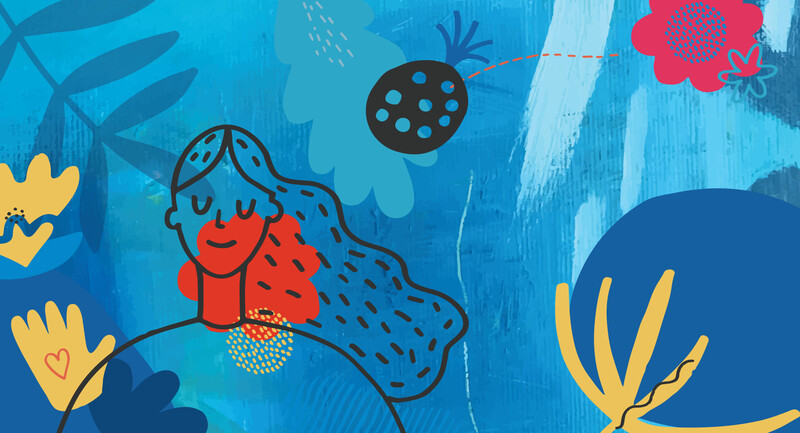There is a growing consensus that the frequency and intensity of challenging student behaviors have increased since students returned to in-person learning after the COVID-19 pandemic. Survey results from the National Center for Education Statistics (2023) indicate that 87 percent of public school teachers believe the pandemic negatively impacted students’ social-emotional development, 84 percent agreed or strongly agreed that behavioral development was negatively impacted, 56 percent indicated there have been increased classroom disruptions from student misconduct, and 48 percent reported an increase in disrespect toward teachers and staff.
This increase in challenging behaviors has sharpened educators’ collective focus on the impacts of the traumas and systemic inequities experienced by students and families. However, our focus is incomplete if we overlook how teachers have been similarly impacted by the pandemic, personally and professionally. For example, teachers pivoted from familiar methods to new formats and platforms, including hybrid options. They were celebrated as heroes, only to have popular opinion shift, as their instructional decisions were questioned and teachers faced job loss. As the pandemic laid bare and expanded inequities, teachers continued utilizing money from their own pockets to ensure students had enough food, soap, clean clothes, and more.
Today, many teachers continue to be impacted by a lack of sufficient funding and staffing, resulting in larger class sizes, few substitutes, and the need for teachers to fill roles previously held by librarians, counselors, nurses, and others due to budget cuts. Teachers face pressure to ensure students meet proficiency on high-stakes tests, while navigating changes in curricular expectations, insufficient planning and preparation time, limited breaks to eat and use the bathroom, frequent meetings, and numerous additional duties. Moreover, teachers lead students through active shooter drills (and sometimes the real thing), while facing external pressure from communities who challenge particular approaches—like social-emotional learning and trauma-informed practices—used in schools.
Collectively, these experiences are systemically dysregulating. As a teacher-educator, I spend time in a range of schools and classrooms, actively listening to teachers and studying students exhibiting challenging behavior. I was recently certified in the Neurosequential Model in Education, which provides educators with evidence-based understanding and techniques rooted in neurodevelopment and trauma awareness. Through my work, it has become clear to me that if we want more regulated students, we must prioritize the well-being of our teachers.
What Do We Need to Know?
A wealth of information is available about the impacts of experiencing stress and trauma, and pathways for healing from trauma (Menakem, 2017; Perry, 2014; Perry & Winfrey, 2021). I explore here two key concepts as they pertain to supporting teachers to more effectively support students with challenging behaviors.
The first is state-dependent functioning. Our brains are constantly incorporating information from the outside world (e.g., novel stimuli, smells, sounds) and from our internal networks (e.g., hunger, fatigue). When that information communicates to us that we are balanced, we can access all parts of our brains, including those responsible for learning, creativity, and problem solving. Psychiatrist and neuroscientist Bruce Perry calls this our “calm” state (Perry, 2014). In a calm state, students are most successful in learning, communicating, problem solving, and collaborating; calm teachers are likewise at their most effective.
In a calm state, students are most successful in learning, communicating, problem solving, and collaborating; calm teachers are likewise at their most effective.
Conversely, when our bodies are out of balance or dysregulated, what Perry calls an “alarm” or “terror” state, we redirect attention to the “lower” parts of our brain in order to rebalance. Students in alarm or terror states—often experiencing unpredictability, novel stimuli, or conflict—are more likely to engage in maladaptive behaviors. Similarly, teachers in these states are less equipped to respond calmly and effectively.
Emotional contagion, the second and related concept, occurs when people “catch” the emotional state of those around them (Hatfield et al., 1993). People subconsciously mimic facial expressions, vocal tones, and postures of others, mirroring each other’s emotions. Thus, when a student is dysregulated, both the teacher and other students may feel increased stress responses, leading to less than ideal decision making. A dysregulated teacher will only escalate a dysregulated student.
Together, state-dependence and emotional contagion suggest students and teachers need to be regulated to effectively learn and teach. To reduce challenging student behaviors, our approach must include the tools, structures, systems, and supports teachers need to stay regulated, some of which are suggested here, though this is by no means an exhaustive list. These suggestions come from experts in trauma and stress responses—and management of trauma—as well as from schools and teachers with whom I have worked.
Individual Approaches to Teacher Regulation
One way teachers can stay regulated—and build their tool kit for reregulating as necessary—is through self-care. Self-care is any activity a person purposefully engages in to support their emotional, mental, and physical health, and it can assist in finding balance, managing and reducing stress, and increasing teachers’ tolerance for and ability to manage stressful situations. It has become something of a buzzword or platitude in education, as many adults do not have—or do not take—adequate time to engage in self-care practices, and some may not be sure what activities would refuel them in the way self-care is meant to. Beard (2022) offers seven approaches to self-care, each of which should be utilized only if they feel re-energizing to the individual teacher seeking regulation:
Emotional: Using healthy coping strategies such as listening to music, writing or speaking affirmations, setting boundaries to protect time and energy, requesting help, or participating in therapy.
Environmental: Arranging workspaces to be more comfortable, decluttering, cleaning, walking, gardening, and appealing to the senses (e.g., candles, adjusted lighting).
Mental: Engaging in mindfulness and meditation practices, journaling, writing “to do” or “dump” lists, or taking an intentional break from technology and social media.
Physical: Exercising, stretching, yoga, getting proper nutrition, and getting sufficient high-quality sleep.
Recreational: Engaging in—or experimenting to find—enjoyable hobbies, activities, and new experiences or adventures such as hiking, swimming, or playing on a sports team.
Social: Building and investing in relationships with intimate connections and spending time with loved ones.
Spiritual: Engaging in activities that give a sense of meaning, praying or worshiping, meditating, volunteering, and being in nature.
Teachers need help in identifying, building time for, and prioritizing the self-care practices they find refueling. However, while each teacher needs to invest in themselves and find what works for them, individual approaches like those listed here are insufficient without systems-level support.
Teachers need help in identifying, building time for, and prioritizing the self-care practices they find refueling.
Systems-Level Approaches to Teacher Regulation
When students are dysregulated, schools often utilize “calm down,” “peace,” or “reflection” corners and partner classrooms (an arrangement between two teachers wherein each can send a dysregulated student to the other’s classroom). In these spaces, students are explicitly taught strategies for regulation; likewise, teachers can benefit from similar opportunities.
One systems-level approach for teacher regulation is the “Tap-In/Tap-Out” system (Venet, 2019). When a teacher is feeling frustrated, overwhelmed, or otherwise dysregulated, they text personnel from a predetermined list to “tap-out,” taking a short break while another member from the list “taps-in” and covers the class. The dysregulated teacher can then engage in strategies for accessing a calm state before returning to the classroom.
Schools can also provide teachers with professional development on, and time to engage in, mindfulness and meditation practices for themselves and their students, which have many benefits related to regulation and reregulation, including calming the body’s stress response. Through these practices, our heart rate and blood flow return to “calm,” our stomachs become unknotted, and our hands stop feeling clammy, for example, which restores function to the parts of our brain responsible for language, problem solving, and impulse control. Specific regulating strategies include:
Scheduled Regulation Opportunities: Schools can strategically schedule schoolwide routines to help students and teachers achieve a calm state. To start, schools can anticipate times when the school community is most likely to experience increased stress, such as on testing days, and build routines centered on:
Breathing and Mindfulness Practices: Free breathing and mindfulness-for-kids videos are available on YouTube, for example, the Melting and Bring It Down guided meditations provided by Go Noodle. The Transforming Education Mindfulness Toolkit is another free resource to build teacher understanding and capacity.
Movement: Schools can provide time and space for physical activities in the schoolyard, incorporate movement into instruction, and ensure that loss of recess is never used as a punitive response to challenging behavior.
Music: During work time, soft music with rhythms of 60 beats per minute can be played, which has been shown to lower heart rates, release endorphins, and reduce stress (de Witte, et al., 2022). One example is “Momentum” by Motoyuki on YouTube. Relationships: Schools can build belonging through small interactions such as smiling, fist-bumping, and checking in on students as they walk into the building and their classrooms. Other ways to build belonging include schoolwide initiatives, such as morning meetings or Circles of Power and Respect, which can help teachers build trusting relationships among each other and with administrators.
Schoolwide Collaborative Problem-Solving (CPS): Based on the work of clinical psychologist Ross Greene, CPS supports adult (and student) regulation in several ways. The premise of CPS, that “kids do well when they can,” shifts our collective lens by helping us view disruptive behavior as the result of students’ nervous system dysregulation. This shift in focus to the root cause of behavior leads to more effective intervention, as teachers and students (and administrators, social workers, families, or others) work together to identify underlying skills that the student needs to develop so they can meet expectations and reduce repeated disruptive behaviors over time.
It is during a calm state that all of our brains are at their most capable.
CPS is most effective when addressing a pattern of disruptive behavior and when the CPS team works outside of a dysregulated moment (when the behavior is not currently occurring) to generate potential solutions, since it is during a calm state that all of our brains are at their most capable. However, it can be used in the moment: By providing teachers (and students) with a predictable response and framework on which to draw, CPS helps teachers mitigate their own stress responses and avoid a common emotional contagion pattern wherein a dysregulated student leads to a dysregulated adult. A reliable and predictable plan allows the teacher to access the parts of their brain responsible for problem solving and, in turn, supports the student’s reregulation.
Prioritizing Teachers’ Well-Being
The field of education and all those involved were hit hard by the pandemic. While we are only beginning to understand the long-term impacts, challenging student behaviors are on the rise, and, as a result, so too are teacher frustration and disillusionment. There are many pathways that schools and educators can take to address these troubling shifts. But at least one part of our approach must prioritize the well-being of teachers—and the work involved in that approach cannot fall solely on their backs. We must give them a chance to access their own oxygen masks before asking them to mask up a classroom full of students. We must make systematic and intentional changes that help our teachers feel valued, respected, trusted, and safe—in other words, regulated.
Reflect & Discuss
➛ What is one systems-level
approach to supporting
teacher regulation and well-being happening at your
school?
➛ Weisling suggests teachers need both individual and
systems-level approaches
to regulate their well-being.
What are some challenges
teachers at your school face
in authentically practicing
self-care?
➛ Emotional contagion can lead to a cascade of stress
responses between students
and teachers. What strategies
have you implemented in
your classroom to prevent
stress from escalating?









